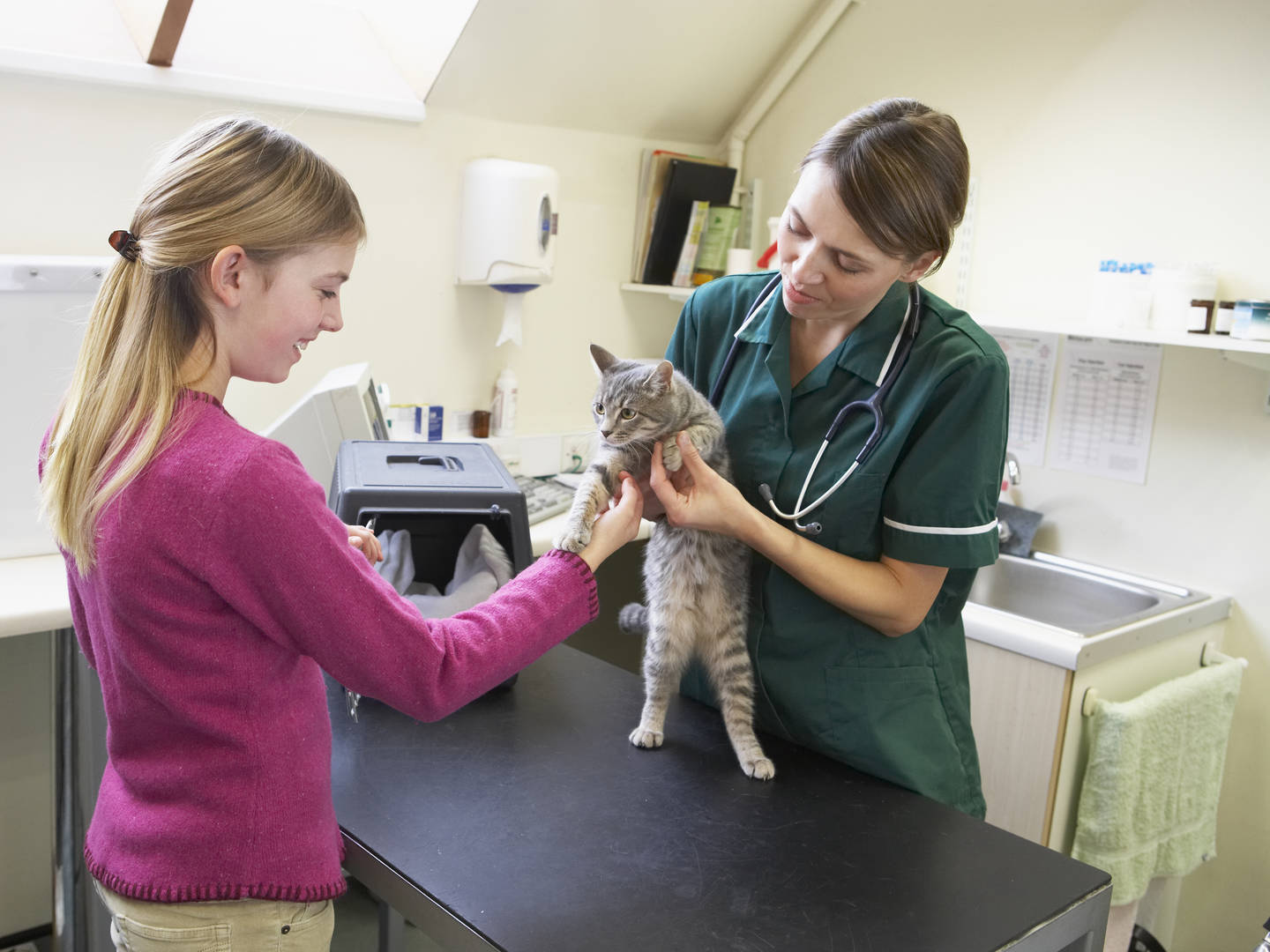Puppy and kitten wellness strategies
By MWI Animal Health

New pet owners are a receptive audience for messages about kitten or puppy well-being. As their veterinarian, you are a trusted source of information about new pet education. Have you considered how and why to communicate the importance of health screenings and vaccinations, spay and neuter surgeries, and proper behavior education?
The why of new pet education
As a veterinary professional, you understand that puppies and kittens need core vaccinations, plus additional shots based on lifestyle, geography, and exposure risk. You also know they should get health screenings like complete blood counts, biochemistry profiles, and urinalysis.
Put yourself in the pet owner's shoes for a minute. Medical terms in messaging can seem complicated. Consider simplifying your messages. Don't just tell them what tests their pet needs. New pet education is about telling them why those tests are beneficial.
"Pets aren't always great at telling us when they feel unwell. Screening tools such as blood work, urine testing, and imaging like X-rays can help us find any number of issues. A physical exam is also worth its weight in gold because there are many things that a simple telemedicine consult cannot determine," explains Dr. Linda Simon, MVB, MRCVS, a London-based consulting veterinary surgeon for FiveBarks.
Time and money can weigh into the new pet parents' decisions to bring their pet in for routine exams. Does your practice offer digital, curbside check-in? That service can create ease for owners and facilitate efficiencies for your front-desk staff, eliminating some time roadblocks around appointment arrivals and paperwork.
Educate pet owners on the concept of spending a little time and money now to avoid future commitments. The time it takes to bring a pet to the veterinary office for a routine vaccine will be nothing compared to the multiple trips they will need if there is a serious illness diagnosis.
Time is a precious commodity for both yourself and your clients. There's no need to carve out separate intervals in your already packed day for pet education conversations. The annual visit is the ideal opportunity to engage pet parents. Work to avoid the pressure to hit every health topic at once and instead curate your discussion around breed-specific needs.
On the financial side, incorporate health screening and vaccines into your customizable preventive care plans to make them more affordable. It costs less to screen for illnesses than to treat them. Including vaccines (especially annual ones) in the plans will encourage compliance. For dogs, communicate the value of breed-specific screenings to test for common issues, such as hip dysplasia in young German Shepherds. Even though the pet is young, encourage the owners to think forward to support its long-term health.
Customize the right channel for new pet education
Build your relationship and showcase empathy for their specific puppy or kitten's healthcare by sending customized marketing emails that target each pet's scheduled screenings and vaccines.
Connect with pet owners on various channels based on their preferences to help routine appointment reminders stick. Do they like email notifications? A postcard mailed to their home? Text messages before an upcoming appointment? Combining high- and low-tech channels can prove effective, and you may need to experiment to find the right delivery method for different clients in your animal health practice.
Your website and social media profiles are useful channels for showcasing messages about the value of pet health screenings and vaccinations. Consider sharing puppy and kitten vaccination schedules or the benefits of catching diseases early. Provide useful details as jumping-off points that encourage conversations with veterinarians.
"Pet owners usually understand better if you relate it to human medicine and how going in for their yearly exams and/or bloodwork and vaccinations helps to catch things early," explains Dr. Chyrle Bonk, DVM, Clearwater Valley Veterinary Clinic, Orofino, Idaho.
Remember, words matter. Whether you are talking to new pet owners in the clinic or drafting an email, the language around new pet education plays a huge part in their understanding of the importance of health screenings and vaccinations. Make sure your administrative staff can properly answer questions about health screenings and vaccines, so the new pet owner feels comfortable seeking information from different parts of the business.
"When I'm discussing the importance of health screening and vaccines with my clients, I try to keep it simple. I use phrases like: this is what I did for my dog, or: this is the same thing I would be telling a friend or family member," says Simon.
New pet education on spay and neuter procedures
A new pet owner may bring in a puppy or kitten that isn't yet spayed or neutered. As a veterinary professional, it's your responsibility to educate them on the health benefits of these procedures and why their veterinarian's office is the optimal place to have them performed.
"While it can be difficult to gain a client's trust during a short consult, it is important that they feel you are treating them as an equal and being honest."
Linda Simon
Start the new pet education early, even before the animal has reached the appropriate age for spaying or neutering. If a client doesn't agree at first, build follow-up messaging as part of your email communications to educate the pet parent on the long-term health benefits for the pet, such as fewer occurrences of uterine infection and breast cancer in female pets and fewer occurrences of prostate infections and testicular cancer in male pets.
You might frame communications around how, in the long term, the procedures create less stress for the owners. Explain that spayed or neutered pets display fewer behavior problems associated with mating instincts and are less likely to wander and potentially get lost or hurt.
Understandably, some owners may want to visit a lower-cost spay or neuter clinic for the procedure. In your communications, highlight the benefits of having the surgeries performed at your practice, namely post-operative care quality and the existing relationship you developed with their pet.
Bonk explains, "These surgeries are still performed by a veterinarian at those clinics, but animals generally don't receive the aftercare they would at a vet clinic, like monitored wake-ups and possible overnight stays."
A low-barrier financing program is one way to overcome cost hesitations. Can your practice offer this service to remove some of the roadblocks to getting care at the office?
The trust you've built with the pet owner is another reason to have the procedure performed by the vet.
"By the time your puppy or kitten reaches spay and neuter age, we know what the pet is like and what their lifestyle is like. We always break down the cost to show clients what you are getting," notes Dr. Brian J. Bourquin, DVM, founder, Boston Veterinary Clinic.
Post-surgery, consider using an app for virtual check-ins with the pet parents. Offering a convenient way to stay in touch around the animal's progress and for owners to ask questions lifts the barrier of having to come into the office for minor issues.
Answering behavior questions in new pet education
New pet owners are understandably curious about their puppy or kitten's behaviors. What is normal? When should I be concerned? How can I save my furniture from these puppy teeth? You understand their pet's health holistically and should communicate your value as a trusted resource for behavior information.
"While it can be difficult to gain a client's trust during a short consult, it is important that they feel you are treating them as an equal and being honest," says Simon. In your verbal and written new pet education, show your expertise, so pet parents turn to you and not "Dr. Google" with their behavior questions.
Ask pet owners behavior-related questions during checkups. Because some behavior issues have medical causes, it's important to assess the pet to rule out certain conditions.
"Yearly exams are also a great time to discuss behaviors, grooming, issues, diet, and other stuff that owners might not make a specific appointment for. Most of the time it's on the vet to ask questions about these things since owners might not think to bring them up themselves," remarks Bonk.
Though animal behaviorists are a useful resource, it's important to communicate to the pet parent that they should run behavior concerns past their veterinarian first. A behaviorist doesn't necessarily have the clinical knowledge to identify any underlying disease processes that could inhibit behavior modification. The pet owner can understandably grow frustrated if certain tactics aren't working, yet it might not be the pet's fault.
The ability to prescribe medication is another reason to educate pet owners on the importance of a veterinarian-first approach to behavior questions. For severe cases of separation anxiety in dogs, combining anti-anxiety medications with training can prove effective. Yet, a trusted veterinarian must examine the pet to achieve these results.
To continue the conversation around behavior, create customized communications for client follow-ups. Personalizing with resources and behavior modification tactics geared toward an animal's specific breed and life stage shows you listened and care about what their pet is going through.
No matter the medium, messaging around puppy and kitten preventive care strategies should come from the trusted relationship between you, as the veterinarian, and the client. In fact, a recent study of pet owners shows they consider their veterinarian "irreplaceable as a source of trustworthy pet information." 1 Build a foundation on that trust to help new owners set their pets up for lifelong success.
Reference
1. Lai, Nanette, et. al. Pet owners' online information searches and the perceived effects on interactions and relationships with their veterinarians. Veterinary Evidence. 8 January 2021. Accessed 14 October 2021. Available online at: https://www.veterinaryevidence.org/index.php/ve/article/view/345





